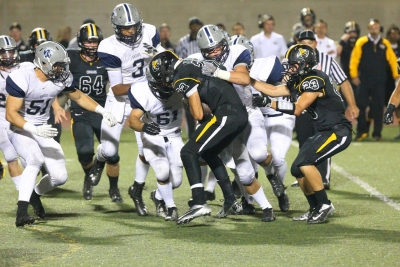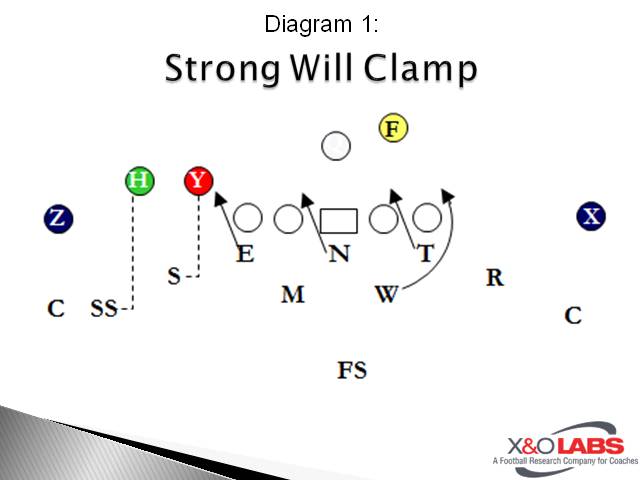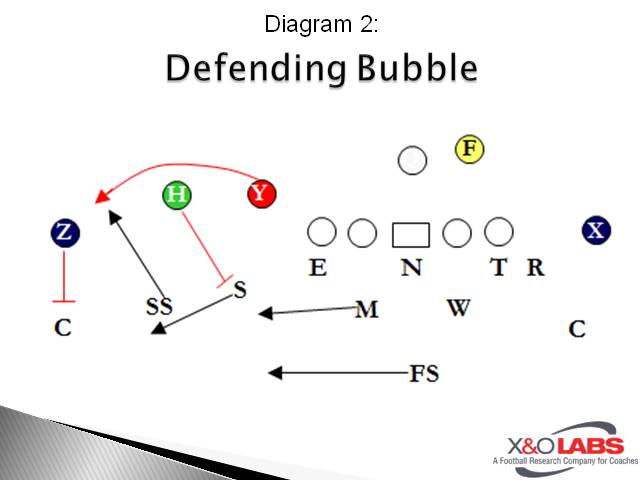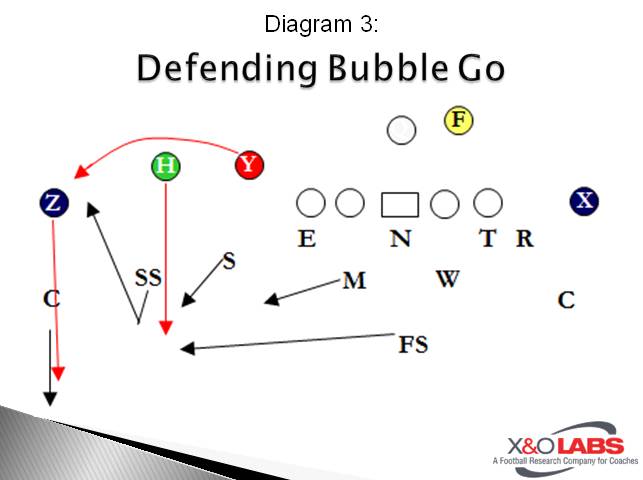By Jason Bornn
Head Coach
Saugus High School (CA)
Twitter: @JasonBornn1
Introduction:
 Whether it is 10, 11, or 12-personnel, the Trips formation can present some unique challenges to any defensive scheme and, depending on your comfort level of what you do, may require multiple answers.
Whether it is 10, 11, or 12-personnel, the Trips formation can present some unique challenges to any defensive scheme and, depending on your comfort level of what you do, may require multiple answers.
Here are a few of the questions we focus on at Saugus High School:
1. What do they do out of Trips?
2. Are they run or pass heavy from Trips or are they balanced?
3. Do they run bubble, bubble go, flood, and/or three verticals from Trips?
4. Do they have a player that they like to isolate on the single side?
Once the answers to these questions are identified, we are able to focus in on the appropriate coverage for what the opposition likes to do out of their Trips sets.
Base Defense:
We are a 3-4 base defense but the coverages we run versus Trips can be applied out of any defensive structure. For teams who like to use the bubble, bubble go, and flood concepts to the trips side, we like to run what we call Clamp coverage, which is a hybrid Cover 3 (Diagram 1).

Clamp Coverage:
Clamp coverage is our top coverage to shut down a common staple for trips teams: the bubble screen. At the same time, it is solid against double outs by #2 and #3 receivers and common flood concepts. We also find this coverage lends itself to great run support against trips side run schemes.
Here Are Our Rules for Clamp Coverage:
Trips Side CB: Defend deep routes of #1 (Fade-Post-Corner); will continue to sink if #1 hitches up and #2 goes vertical, squeezing the route of #2.
Strong Safety: He aligns seven yards deep and one yard outside of #2 receiver with his tail to sideline. He will begin a slow shuffle slide sink with eyes looking through the #3 receiver to the QB. He will then react to one of the following scenarios:
If the #3 receiver bubbles and the QB shows the palm off the football for the bubble, the SS will drive on the bubble (Diagram 2). If he does not get the bubble read from #3 and the QB, he will continue to sink until ball is throw to the bubble (Diagram 3).











